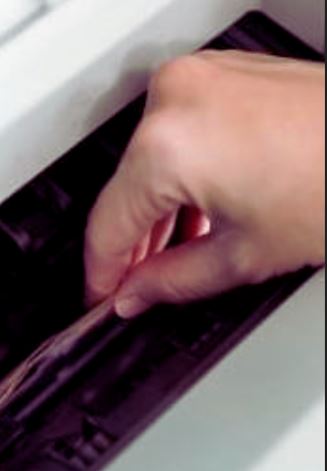Cash Deposit Machines: A Convenient Banking Solution
Cash Deposit Machines: A Convenient Banking Solution: Today when mobile apps and online transactions dominate the banking landscape, one might wonder about the relevance of cash deposit machines.
However, these ubiquitous machines continue to play a crucial role in the banking sector by providing a convenient and efficient way for customers to deposit cash securely.
In this article, we will explore the significance of cash deposit machines, their evolution, benefits, and the future they hold in the ever-changing banking industry.
The Evolution of Cash Deposit Machines
The idea behind Cash deposit machines was to reduce the burden on bank tellers by automating the process of cash handling and depositing. Over the years, these machines have undergone significant improvements in terms of technology, security, and user-friendliness.
CDMs are equipped with advanced features such as touchscreens, barcode scanners, and image recognition technology. These enhancements have made the deposit process quicker and more accurate. Early cash deposit machines were basic and relied on manual entry of deposit details, which could be time-consuming and prone to errors.
The Benefits of Cash Deposit Machines
Cash deposit machines offer a many benefits to both banks and customers. Let’s take a closer look at some of these advantages:
1. Convenience
CDMs are available 24/7, this convenience is specially valuable for businesses that handle large amounts of cash.
2. Freedom of cash deposit any time through Cash deposit machines
Allowing customers to deposit cash at any time, even outside of regular banking hours.
3. Time-Saving
Cash deposit machines eliminate this hassle, enabling customers to complete their transactions quickly. Traditional methods of cash deposit involve waiting in long queues at the bank.
4. Accuracy
With advanced technology, CDMs can accurately count and verify deposited cash, reducing the chances of errors that can occur with manual counting.
5. Security
Depositing cash at a CDM is often considered safer than carrying large sums of money to the bank. These machines are equipped with security features to protect against theft and fraud.
6. Reduced Operational Costs:
For banks, CDMs help reduce the operational costs associated with manual cash handling and processing. This cost-saving benefit can be passed on to customers in the form of lower fees or better interest rates.
7. Paperless Transactions
Cash deposit machines provide the option to receive electronic receipts, reducing the need for paper records and contributing to environmental sustainability.
8. Accessibility
CDMs are usually located in easily accessible areas, including bank branches, shopping centers, and other public places, making them convenient for customers.
How Cash Deposit Machines Work
To understand the functioning of a cash deposit machine, it’s essential to know the basic steps involved:
1. User Identification
Customers need to log in to the CDM using their bank account number or debit card, followed by their PIN or other authentication methods.
2. Deposit Details
The user selects the type of account and enters details such as the amount to be deposited.
3. Cash Deposit
Customers feed the cash into the machine, which then scans, counts, and verifies the authenticity of the notes.
4. Confirmation
After successfully depositing the cash, the machine provides a receipt with transaction details for the customer’s records.
The Future of Cash Deposit Machines
As banking technology continues to evolve, what does the future hold for cash deposit machines? While the importance of CDMs is not likely to diminish anytime soon, there are several potential trends to watch for:
1. Integration with Mobile Banking
CDMs may become more closely integrated with mobile banking apps, allowing customers to initiate deposit transactions from their smartphones and complete them at the machine.
2. Enhanced Security Features
As cyber threats evolve, CDMs will need to incorporate even more robust security features to protect against fraud and hacking attempts.
3. Advanced Authentication Methods:
Banks may implement advanced biometric authentication methods such as fingerprint or facial recognition for added security during cash deposits.
4. Cash Recycling
Some CDMs already have the capability to dispense cash in addition to accepting deposits. In the future, this feature may become more common, reducing the need for traditional ATMs.
5. Data Analytics
Banks can use the data collected from CDM transactions to gain insights into customer behavior and improve their services further.
6. Expansion in Emerging Markets:
Cash remains a dominant form of payment in many emerging markets. Therefore, CDMs may see increased adoption in these regions as banking infrastructure continues to develop.
Must read:
https://accountsgala.com/how-can-a-nrps-gets-biometric-verification-done-for-there-bank-account/
Conclusion
While the banking landscape continues to change with the rise of digital solutions, CDMs remain a vital component in the ecosystem, and their continued evolution will ensure that they stay relevant in the years to come. Cash deposit machines have proven themselves to be a valuable asset in the world of banking. They offer convenience, efficiency, and security for both customers and financial institutions. Whether you’re a business owner looking to streamline your cash handling or an individual seeking a hassle-free way to deposit money, cash deposit machines are here to simplify your banking experience.







